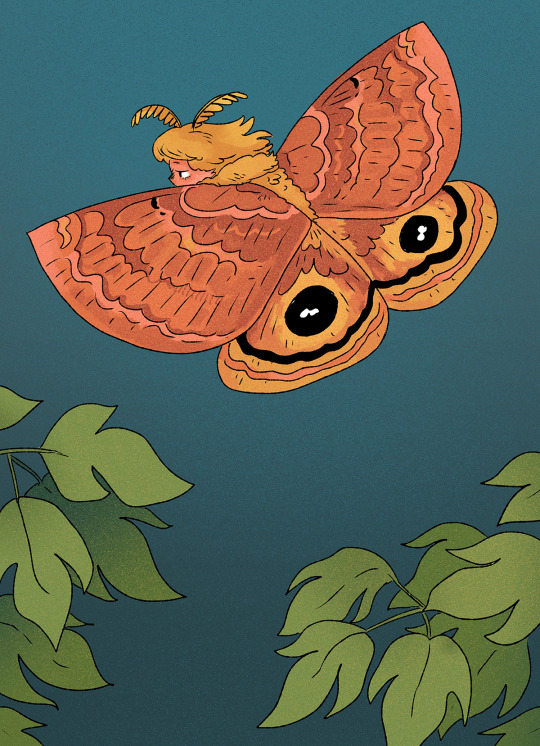#sassafras
Explore tagged Tumblr posts
Text

sassafras said 🌿👐‼️
54 notes
·
View notes
Text

Substitutes for Coffee
-Wright's Book of 3000 Practical Receipts circa 1860s
34 notes
·
View notes
Text

Clara Oswald in the Huttslayer by Sassafras
#doctor who#dr who#new who#nuwho#doctor who fanart#doctor who art#dr who fanart#dr who art#star wars#slave leia#star wars cosplay#crossover fanart#crossover#crossover art#clara oswald#clara oswald fanart#clara oswin oswald#jenna coleman#jenna louise coleman#moffat era#huttslayer#sassafras#fanart#jabba the hutt#star wars return of the jedi#return of the jedi#star wars original trilogy#doctor who companions
21 notes
·
View notes
Text

Io moth, so beautiful, in such a somber moment. Day 15 of my mothtober prompts!
270 notes
·
View notes
Text


Sassafras - North Brazilian boa (Boa constrictor)
46 notes
·
View notes
Text
Hey you know what? Im so very tired of ppl saying shit they absolutely do not mean.
13 notes
·
View notes
Text

one day i'm going to write a fic where some really fucked up shit happens to sass and vex is like "first time?" and they become boyfriends
#traditional art#sketching#octoling#splatoon#splatoon oc#vex#sassafras#mechanical pencil#hearts#beach#sunset
8 notes
·
View notes
Text

Someone wanted to see Lestat and Armand, so I give 🩸🖤
#lestat de lioncourt#armand#armand de romanus#lestat#iwtv#tvl#tva#tvc#vampire chronicles#lesmand#sassafras#chibi art is comfort art#lil guys#ship art#vampires
125 notes
·
View notes
Text
TIL that sassafras is a living fossil dating back to the late Cretaceous period. This means dinosaurs could have drunk rootbeer.
#Good for them#Fun facts from wiki wormholing#Unfortunately I don't think mammals were developed enough to make floats#Anyway living fossils are cool#dinosaurs#root beer#sassafras#Til#living fossil#post o' mine
16 notes
·
View notes
Text

Sassafras
7 notes
·
View notes
Text

Plant Profile: Sassafras - S. albidum
This plant profile spotlights an American favorite, the originator of a flavor profile loved/hated throughout the world and perhaps one of the more unique eastern trees with a name that's very fun to say. Today we will discuss the Sassafras.

If you went to an American Public school near an eastern forest, you probably had a nature walk where someone pointed out Sassafras for its connection to root beer. For its smell alone I find it's a fun plant to teach people about, there's honestly nothing else around here quite like it.
Let's start with description, Sassafras is a member of the laurel family (think aromatic woods like Bays, Spicebush, and Avocados). The tree itself is easily distinguished by its scent/form/and unique leaf features. The bark when young is smooth and grey but as it ages it can become furrowed and reddish brown and the main trunk is almost always kinda wavy. The twigs are grey to yellow green when young and an easy access source to encounter the lovely rootbeer scent. Sassafras has 3 different types of leaves, one standard ovular pointed leaf, a 2-lobe, and a 3 lobed mitten like leaf (image above) the upper surface is hairless while the underside is hairy. The most distinguishing characteristic of Sassafras is its extremely vibrant and variable mix of fall coloring, often turning yellow, pinkish, orange, or red; sometimes all on different leaves, it's a bit unpredictable. The tree itself is unisexual meaning flowers are either male or female but the small fragrant yellow flowers form globular puffs along the branches (see images below). The fruit itself is a small blue thing attached to a reddish stem, I've never seen one up close usually the birds get them before me.


Range and habitat: Sassafras can be found in upland or sandy/rocky to loamy neutral soils throughout the eastern US, Southwest to East Texas, South East to like Jacksonville Florida, Northeast to Southern Maine then Sporadically West to Iowa. In these locations it primarily acts as an earlier succession species, requiring light to actually thrive, Sassafras is aggressive but can also exist comfortably in forests when mature.
Sassafras itself has a variety of behaviors influenced by condition/habitat. I most commonly find it along the Appalachian trail in oak heaths or forested mountain slopes where openings once were, here its usually found as a singular wavy reddish trunk among other tall trees (Image 1). But typically Sassafras is a pioneer species, saplings will die without full sun, because of this the tree is more likely to propagate along fencerows, old fields, and unmaintained disturbed ground. Here we can find nearly pure stands of dense wavy trunked colonies dominating open ground as one of the only species in a thicket. Sassafras also has an allelopathic affect on other plant life, this primarily affects the growth of annual herbaceous plants but also lowers the germination of other other seeds.
Mount Moriah Cemetery in Philadelphia is one of the most urban examples of this type of thicket (photo below by talented Philly Photographer Supernova)

All that being said about aggressive succession the tree has some pretty positive landscape value: bringing a pleasant odor, attracting birds, and lovely spring floral display (Sassafras in Philly park below). It's downside (aside from the possibility of numerous root clones... which doesn't always occur) is that the tree doesn't always transplant well, it will die if seemingly arbitrary conditions are not met, it just can't grow some places even with well draining soil and full sun.

Ecological value is very high with Sassafras, as a bird disturbed species it, of course, is an excellent energy source for summer birds and spring pollinators. The tree can also serve as an alternate host source for the Spicebush Swallowtail (image below of said butterfly on Swamp Milkweed)

Sassafras historically has had intense culture usage by anyone who comes in contact with it: Indigenous Americans, Europeans merchants, American Settlers, and Creole Cooks. I'll give a snippet of history and use of American Sassafras with each cultural relationship. I will warn everyone that according to the FDA: safrole (found in sassafras) has been found to cause cancers and serve liver damage in mice which is why natural Sassafras is no longer used in our rootbeers or deemed safe for human consumption. I will avoid supporting any 'medical claims' for Sassafras as an herbal supplements as that is extremely unethical, and will instead focus on the historical and wild food aspect.
Let's start with our First Nations, Sassafras is used in a variety of ways throughout Turtle Island both prior to colonization into today, most Indigenous relationships were medicinal in nature. My peer and I were directed to some uses when working with a Lenape clan last year. One can derive a red or yellow tea from Sassafras, Yellow is the easiest as you only require stems. Essentially you just take cleaned thick cuttings and boil them for half an hour till the tea is yellow. The red tea derives from root cuttings and has a stronger flavor, this was adapted by Colonists for other uses...
For the Europeans, early in the days of American Colonization, Sassafras was a beloved aromatic tree and medicinal herbs prioritized in trade with the indigenous groups. The Old World was concurrently suffering from syphilis outbreaks in the 1600s, which they assumed originated in the Americas. Europeans of the day marketed Sassafras Root as an -american- natural cure for the 'american disease' syphilis. With each grift there is a huge demand, some sources state Sassafras was the second most valuable wood in New England. This root elixir was considered a medicine (not helpful to curing Syphilis) to 1600s Europe and to this day is still mostly perceived that way by Europeans (for multiple reasons). The Asian species of Sassafras (Sassafras tzumu and S. randaienseare) also known in Chinese medicine however that's an entirely different history.
Later American Settler Traditions of making (slightly alcoholic) Root beer was a variation on Indigenous Root Tea recipes. I'm less familiar with that history but my professor used to make red root tea in southern Pennsylvania. The roots themselves have a gelatinous consistency which transfers into the tea and the beer, this is where the famous lasting foam comes from in Root Beer. Additionally, this quality is used southern cooking as Sassafras leave act as a thickening agent (in soups mostly).
Also aside from being carcinogenic apparently safrole (the reason sassafras is no longer consumed) is a List I chemical in the US (Highly tracked substance by the DEA) as it can be used to synthesize MDMA.... it's difficult to isolate so narcos of tumblr don't get too hopeful.

Lastly I'll focus on Propagation because it is a bit difficult but possible. The easier-to-gather but harder to succeed method is taking a root cutting from a colony in midwinter: you should find 1/4" thick pieces, wash them and cut them into 2" segments placed in seed-soil mixes horizontally and covered. For seeds (the more successful method but harder to find) remove the outer flesh as soon as they develop and place in moist blotting paper and stratify for 3-4 months, most are likely to germinate this way. You can also buy saplings from Bowmanhill Preserve in New Hope, PA; No shame in propagation failure...
This has been my piece on Sassafras, I hope you guys are more likely to spot the leaves and give them a smell next time you're outside. Please also heed the FDA's warning about the tea as a carcinogen, while I don't believe in denouncing indigenous food cultures, over consumption can harm you here. Happy Hunting.
5 notes
·
View notes
Text

Clara in Bed - Doctor Who by Sassafras
(full picture here)
#doctor who#doctor who fanart#dr who#new who#nuwho#dr who fanart#dr who art#doctor who art#clara oswald#clara oswin oswald#jenna coleman#jenna louise coleman#sassafras#doctor who companions#companion#clara oswald fanart#art#fanart#fan art#doctor who series 7#doctor who series 8#doctor who series 9#moffat era
16 notes
·
View notes
Text
A recent poll about root beer reminded me that most other countries don’t have sassafras trees, the main flavoring agent in most root beers (some use sarsaparilla, which is more common outside the US, but I honestly don’t know how those compare to sassafras).
It also makes me wonder how many places have birch beer, a soda flavored from birch bark, which in my opinion tastes minty and sweet, almost like wintergreen soda.
But mainly it reminded me of this video by Alexis Nikole on TikTok:
127 notes
·
View notes
Text





✨beyond the pines homestead✨
🏹🌲🏡
the American Indian way of community, harvest, & breaking bread 🍞
#homesteading#cosmic#writing community#pine trees#magic the gathering#sassafras#cypress#indigo girls#ntozake shange#beautiful women#herbalism#gardening#oracle#tarrot cards#indie games#pottery#painting#drawing#cooking#womb healing#yoni massage#yoni#steaming
25 notes
·
View notes
Text

I flew half way across the country for 12 hours (from touch down to take off) to visit the Flagler Museum in Palm Beach Florida, for the sole purpose of having the opportunity to witness an exhibit showcasing a collection of works from my most beloved artist, Alphonse Mucha.
I fell so incredibly ill the week of this trip, and I was terrified that I would not make it. I did, and it was beyond words. This trip was so much more than I’d bargained for. It is truly one of the most magnificent bits of magic I’ve manifested for my self in a long long time. I look back at this adventure often, and my heart is so grateful for what it’s given me. It was truly a lifelong dream that has been fulfilled.
#when I tell you I cried#I mean… I fucking silently sobbed until the absolute last moment I had to leave#alphonse mucha#2024#Henry Morrison Flagler Museum#sassy.jpeg#sassafras
22 notes
·
View notes



